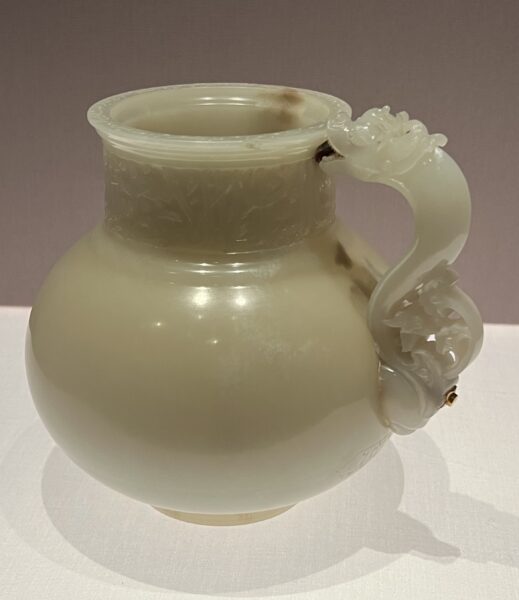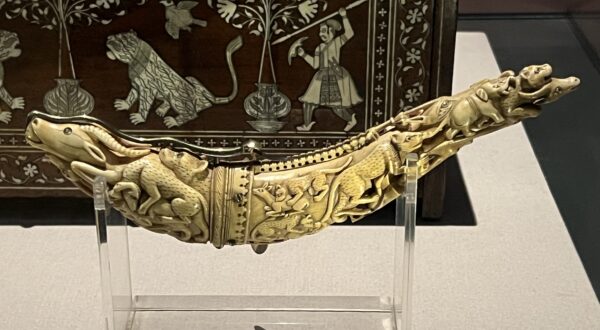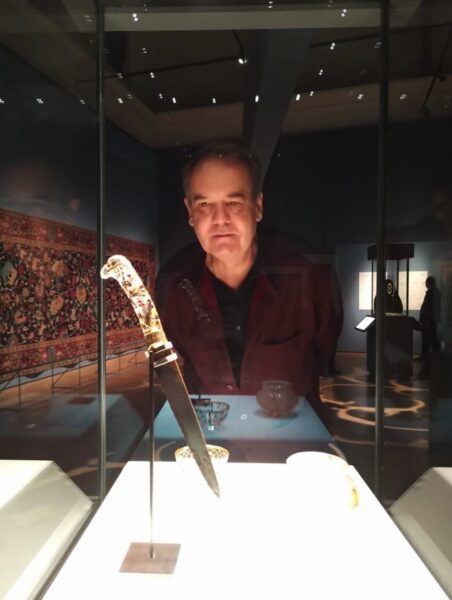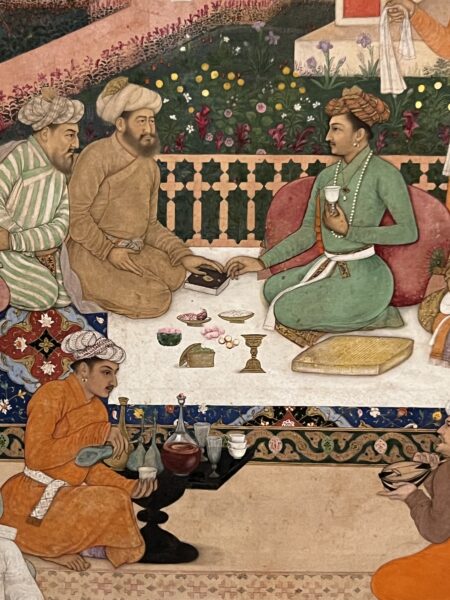Some Thoughts on the V&A’s ‘The Great Mughals’ Exhibition
London’s Victoria & Albert Museum has yet another Mughals exhibition on right now – ‘The Great Mughals: Art, Architecture and Opulence’ – until May 5, 2025.
There are many marvellous items on display – many of the Mughal paintings are breathtaking – and the curators have done well to borrow some stunning items, particularly several pieces from the Museo Nazionale del Bargello in Florence. These items, together with the V&A’s exceptional items, items borrowed from the al-Sabah Collection in Kuwait and the Museum of Islamic Art in Qatar, all make for a spectacular display.
A large number of items come from something called the Iran-Zamin Collection as well – many of these are curiously lesser pieces. It’s not that such pieces have no place in such an exhibition – they certainly do because the idea that everything associated with the Mughals was unrelentingly fabulous simply isn’t true. But what is curious is why such items needed to be borrowed from this collection, when there is no shortage of these types of items in public museums in London and elsewhere in the UK.
One particularly disappointing aspect of the exhibition is the lighting – too often it is inexcusably poor. In some respects, the catalogue for the exhibition is better than the exhibition itself because the items in the catalogue have been photographed in such a way that their detail can be seen. This is not the case for too many items in the exhibition. There are at least two items on display that are lit so poorly that they might as well not be there. Other items are so over-lit and reflective that their detail cannot be seen.
The exhibition is definitely worth seeing. But the installation – most particularly the lighting – is grossly flawed, and quite lamentable for what is supposed to be one of the world’s great museums.

Above: The entrance to the exhibition.

Above: This item is so badly lit that the lenders must wonder why they bothered. This is not a bad photograph but an accurate depiction of how the item appears in its display case. It’s actually a 17th century silver casket for a miniature Koran.

Above: The exhibition’s opening item a 15th century white nephrite jade wine tankard – so poorly lit that the calligraphic detail around the wide rim is barely visible. Indeed, as the item is displayed, it is actually not possible to tell that the neck is decorated with script or otherwise. The items was borrowed from the Gulbenkian Museum in Lisbon. Why bother to borrow it and then not display it properly?

Above: A large, 17th century block-printed, light cotton textile to spread over a floor during summer months. Probably from Madhya Pradesh.

Above: Detail from the textile above.

Above: A spectacular lacquered shield inlaid with mother-of-pearl, from 16th century Gujarat. Borrowed from the Museo Nazionale del Bargello in Florence.

Above: Detail from the above shield.

Above: One of the most fascinating items in the exhibition but so poorly lit that its inclusion is almost pointless. It is a 16th century divination ring or halqeh. The surface is actually engraved with Talismanic script but that is only evident from the image in the catalogue. No such detail is visible when the actual item as viewed in he exhibition on account of the appalling lighting.

Above: One of the most beautifully carved Mughal ivory priming flasks known, dating to around 1600. Borrowed from the Museo Nazionale del Bargello in Florence.

Above: In the first main room, which focuses on utilitarian bronze items.

Above: A fine bronze brazier or atashdan, late 16th century. Probably used for cooking skewered meets. An interesting item but not illustrated in the catalogue.

Above: A 16th century bronze ewer with faceted sides.

Above: A norther Indian cast bronze decanter, circa 1600.

Above: An early 17th century cast brass candlestick from Lahore.

Above: A splendid collection of items made from mother-of-pearl in 16th-17th century Gujarat. Usually these were made for the European market. Their relevance to Mughal India is not especially clear.

Above: A closer view of the dish shown above.

Above: A large, historic spinel carved with the names of various Mughal rules, from the 15th century onwards.

Above: A spectacular white nephrite jade cup carved fro Shah Jahan, 17th century, and an accompanying green jade cup.

Above: The inevitable Mughal miniature of a turkey which has managed to find its way into so exhibitions that it’s no longer surprising, just predictable. Painted around 1612. Yes, turkeys were introduced to India, and peacocks were introduced to England. Many art historians continue to be surprised by trade.

Above: This is a portrait of Malik Ambar, who was brought as a slave from Ethiopia to the Deccan sultanate of Ahmadnagar in the 17th century. Later, he was freed, but his existence in India and others like him, shows how complicated issues surrounding historic slavery and reparations are – or at least should be.

Above: A 17th century carved rock crystal hilt and blade. The hilt is inlaid with gold and rubies.

Above: Detail of the above.

Above: A white marble panel commissioned for Shah Jahan’s garden in Ahmadabad, dated 1618 AD.

Above: A beautiful Indo-Portuguese cabinet, probably produced in Goa, in the 16th century. It’s not really clear why this is in an exhibition on the Mughals.

Above: The exhibition has been open for a few weeks only but already a layer of dust has settled on top of each of the cabinets. How hard would it be to dust the top of each cabinet lightly every few days? As with some of the exhibition lighting, this is simply sloppy.

Above: A 17th century watercolour of various courtly figures in a garden. The detail is extraordinary, most particularly for the depiction of probably imported drinking and other vessels the group is using.

Above: Detail from the above painting.

Above: A well known 16th century water pot in the V&A’s permanent collection, but again, the lighting is poor. The sides are well lit but the way the vessel is cased, it can only be viewed from the front – which is in shadow.
______________
Receive our regular catalogues of new stock, provenanced from old UK collections & related sources.
See our entire catalogue of available items with full search function.
______________

